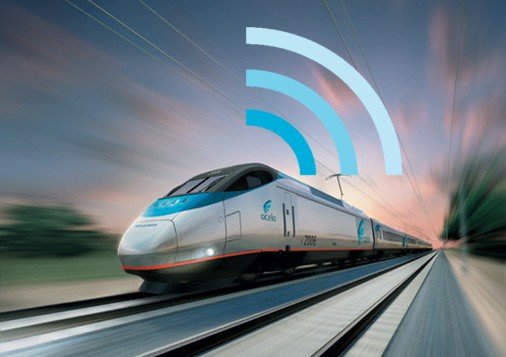💠 Fast-Tracks Radio Systems guarantees signal continuity because it can seamlessly switch from a standard to another in order to ensure a high-speed continuous and reliable Internet connection.
Moreover, it has an high adaptability to the continuous evolution of wireless standards and cellular technologies, so also future technology could be easily embraced.
Let’s see now how it works in details, exploring four different scenarios. Ready? Let’s start!
💠 First Scenario: full Wi-Fi mesh network
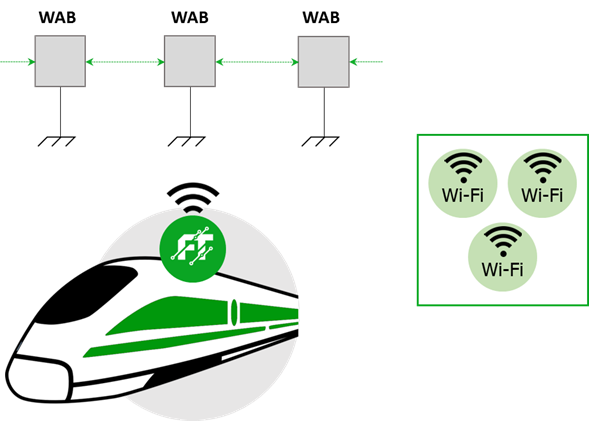
Full Wi-Fi mesh network
The first scenario is a full Wi-Fi mesh network enabling train-to-trackside communication for vital and non-vital applications.
The Wi-Fi network is composed of several fixed nodes, the Access Boxes located at the wayside (WABs), and two on-board nodes, one at the front end of the train; the other one at the rear. Such a mobility architecture allows for uninterrupted connection between the fixed and mobile nodes, and delivers seamless Wi-Fi data signal.
Such a Wi-Fi network is usually adopted for Data Communication System, giving support to Communications-Based Train Control (CBTC), collecting Closed-Circuit TV (CCTV) data and providing Internet access.
💠 Second Scenario: two separate networks
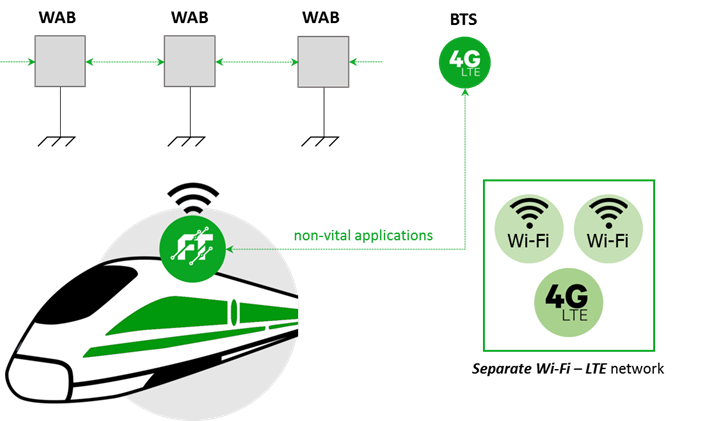
Two separate networks
The second scenario is composed of two separate networks.
The Wi-Fi network enables train-to-trackside communication for vital applications (CBTC data). A public Long Term Evolution (LTE) network delivers data signal for non-vital applications (e.g. CCTV data, VoIP services etc.)
💠 Third Scenario: Wi-Fi in train tunnels and LTE-Unlicensed
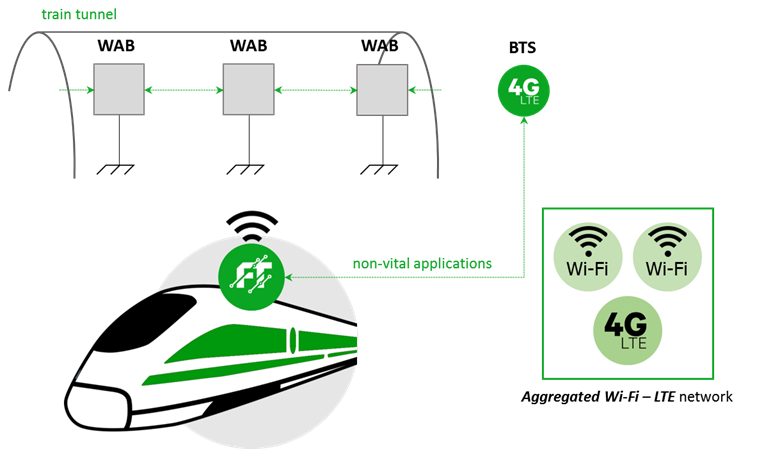
Wi-Fi in train tunnels and LTE-Unlicensed
The third scenario foresees coexistence between Wi-Fi in train tunnels and LTE-Unlicensed (5GHz Band) anywhere else, for vital applications.
Indeed, that allows for an expansion of network capacity. LTE-Unlicensed is not an alternative to Wi-Fi; rather it becomes a complement to it.
💠 Fourth Scenario: Wi-Fi, LTE and LoRa Wireless Technology used interchangeably
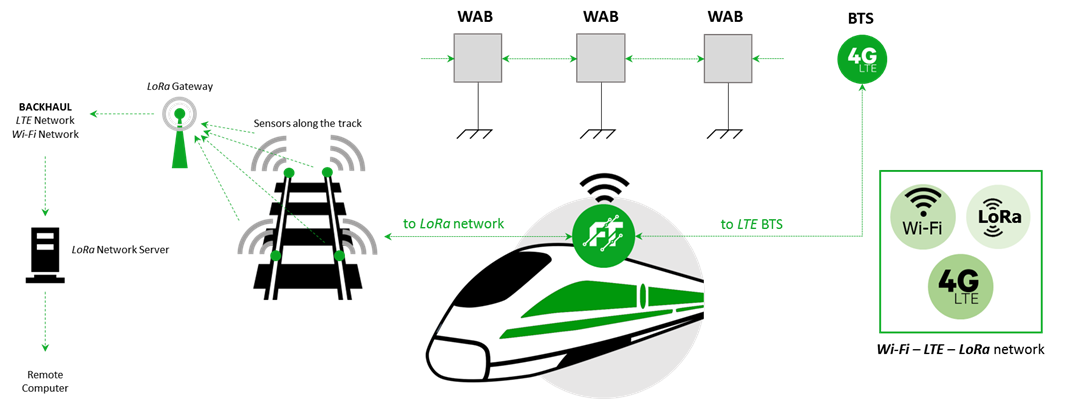
Wi-Fi, LTE and LoRa Wireless Technology used interchangeably
The fourth scenario is a static transmission model in which Wi-Fi, Long Term Evolution (LTE), and LoRa (Long Range) Wireless Technology are used interchangeably for vital and non-vital applications.
LoRa Technology adds a very compelling mix of long range, low power consumption and secure data transmission.
The network using this wireless RF technology can provide coverage that is greater in range compared to that of existing cellular networks. It is typically used for building IoT (Internet of Things) networks.
🚀 Sound interesting? We hope so! The radio is currently finalizing all final tests, and will be soon ready to market.
👉 For more info and details write to pasquale.donadio@comesvil.com and michele.delprete@comesvil.com
🔴 #RadioFast #FastNews #Wireless #Technology #FutureOfTransportation

